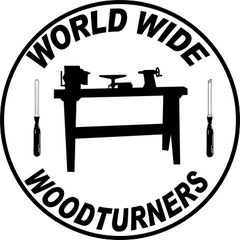If you would like your own hardcopy of this description, click here

This is my drying process for turned wood pieces using a microwave oven. It contains information and processes learned from several different woodturners, along with my own experiences.
- Note #1: Should small cracks begin to develop, I use superglue (CA glue, cyanoacrylic glue), Starbond EM-02 Extra Thin glue. I do not use an accelerator. I use this glue for most issues requiring it that arise with wood turnings.
- Note #2: This process could result in your piece CATCHING ON FIRE. Please be careful, do not overheat your pieces, and exercise prudence and proper safety procedures. I am not responsible for any unexpected or unwanted or damaging things that happen to your pieces, your microwave, your shop, or any structures nearby through using or misusing any part of this process.
- Note #3: If you are using a moisture meter to determine water content, you have to wait until the piece is complete cool to measure. I feel that when my moisture meter is reading 9% or below, the piece is dry.
- Note #4: Your piece will likely warp during the process. This means you will first likely have to true up your tenon first, then mount it and re-turn your piece. Knowing that you will have to do this, it is probably a good idea to mark your centers somehow before you take it off the lathe and begin drying it.
- Note #5: It would probably be best if you do NOT use a microwave that is inside your residence. Things will get stinky with the smell of wet wood….
Process:
- Rough-turn your piece. I usually turn the piece to around 3/4″ or 1″ thick before microwaving.
- Superglue the pith, inside and outside your piece, anywhere it occurs. The pith is a primary source of cracks and checking. This process will accelerate the speed at which cracks develop.
- Place the piece inside a brown paper bag. You can add wood shavings/chips if you want.
- Begin microwaving. I microwave always at 50% power. First time is anywhere from 4 to 7 minutes, depending on how big the piece is and how wet it is.
- When it is done, remove the piece and the bag from the microwave and then remove the piece from the bag. Let everything cool.
- Check for any cracks developing, superglue them (see Note #1 above).
- Repeat steps 3 through 6, reducing the microwave time as the piece gets more dry. Please re-read Note #2 above.
- You are done microwaving when, upon removing the piece and bag from the microwave, the outside of the bag is dry to the touch – or see Note #3 above.
